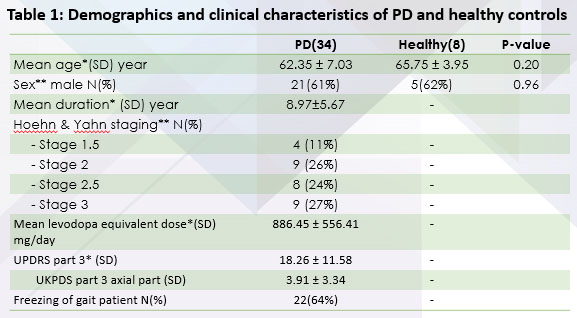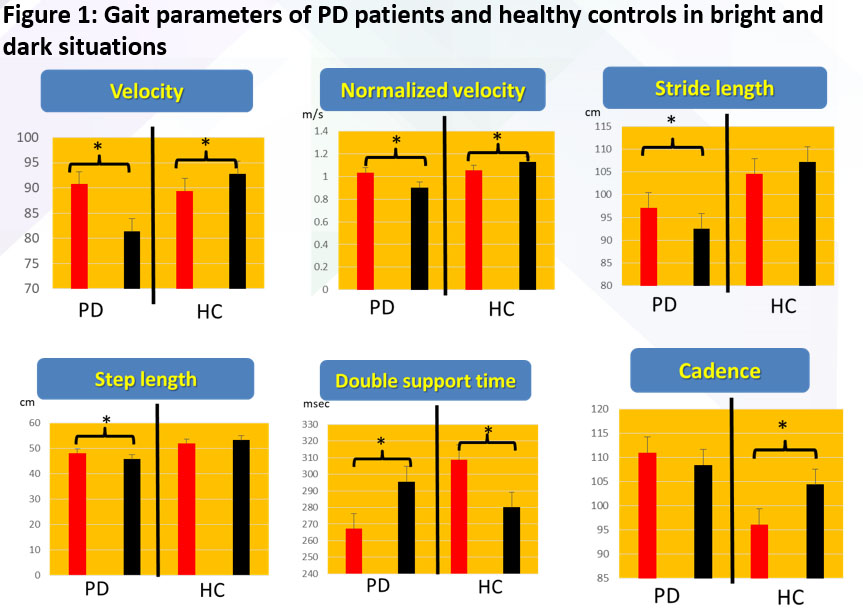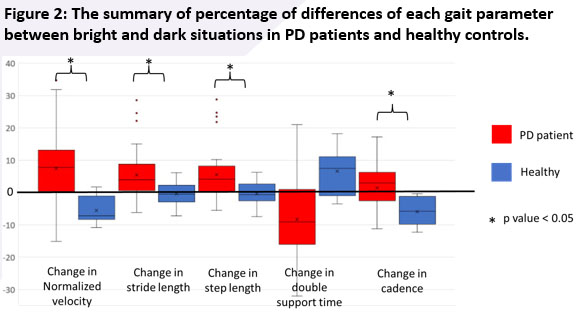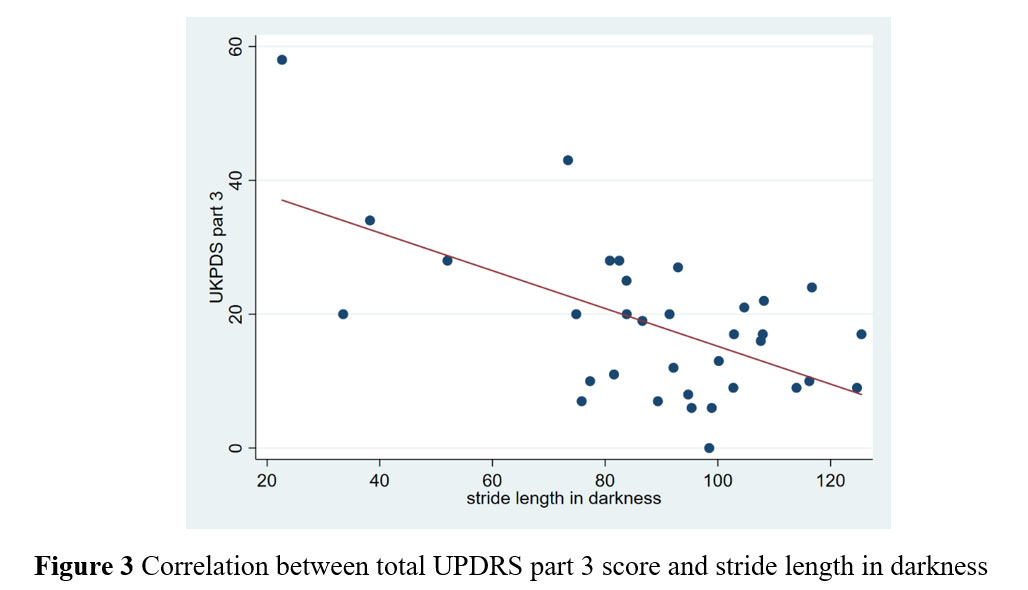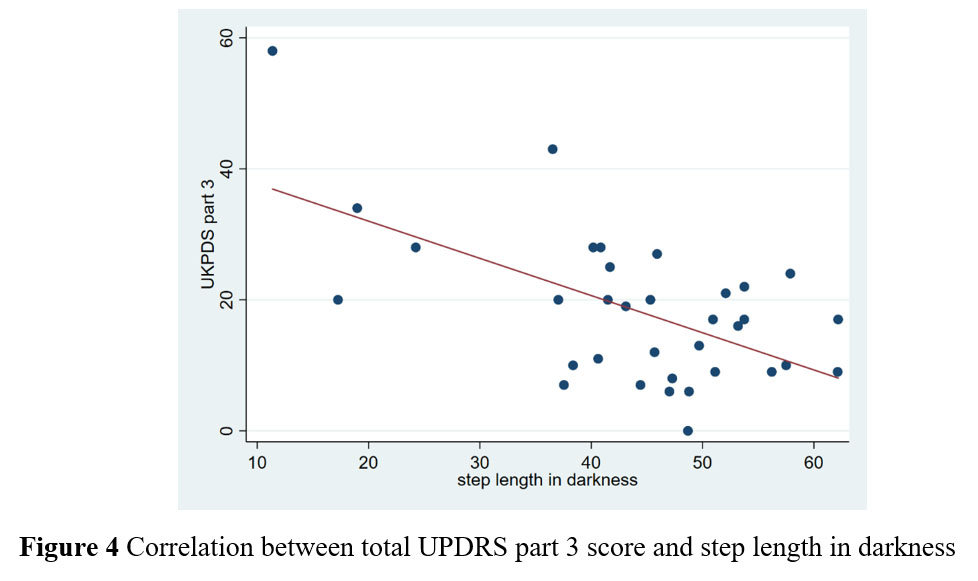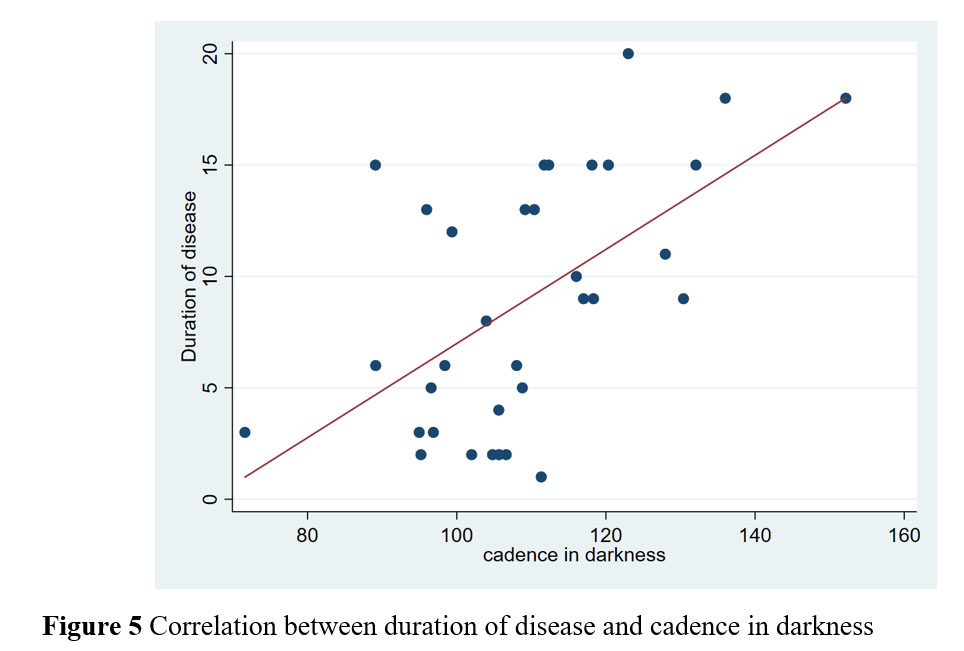Category: Parkinson's Disease: Neurophysiology
Objective: To determine the effect of light on gait parameters in PD and compare to controls.
Background: Falling in patients with Parkinson’s disease (PD) mostly occurs at the nighttime. The effect of light on gait abnormalities that might contribute to falling in PD has never been explored.
Method: 34 PD patients and 8 age-matched healthy controls were recruited in the study. Gait parameters were objectively assessed by the electronic walkway system (GAITRite®). Participants were asked to walk in two situations; the bright situation with the light intensity above 100 lux and the dark situation with the light intensity below 20 lux. Outcomes including normalized walking velocity, stride length, step length, double support time, and cadence were compared between bright and dark situations in each group. The percentage of differences in gait parameters between bright and dark situations were also compared between patients and controls
Results: PD patients had significantly decreased normalized velocity (p<0.01), shorter stride length (p<0.01) and step length (p<0.01) but increase double support time (p<0.01) in the dark compared to the bright situation. In contrast, healthy controls showed significant increase normalized velocity (p <0.01) and cadence (p = 0.01) with decreased double support time (p = 0.04) in the dark situation. The percentage of differences in gait parameters between bright and dark situations were opposite in PD compared to controls.
Conclusion: Our study demonstrated that gait abnormalities were worsen in the dark compared to bright situations in PD, highlighting the important effect of light in these patients.
References: Pilgram, L.M., G.M. Earhart, and K.A. Pickett, Impact of limiting visual input on gait: Individuals with Parkinson disease, age-matched controls, and healthy young participants. Somatosens Mot Res, 2016. 33(1): p. 29-34 Panyakaew P, Anan C, Bhidayasiri R. Visual deprivation elicits subclinical postural inflexibilities in early Parkinson’s disease. J Neurol Sci. 2015;349(1-2):214-9. Martens KAE, Pieruccini-Faria F, Almeida QJ. Could Sensory Mechanisms Be a Core Factor That Underlies Freezing of Gait in Parkinson’s Disease? Plos One. 2013;8(5).
To cite this abstract in AMA style:
P. Anukoolwittaya, P. Panyakaew, R. Bhidayasiri. The Effect of Darkness on Gait Parameters in Patients with Parkinson’s disease. [abstract]. Mov Disord. 2021; 36 (suppl 1). https://www.mdsabstracts.org/abstract/the-effect-of-darkness-on-gait-parameters-in-patients-with-parkinsons-disease/. Accessed December 18, 2025.« Back to MDS Virtual Congress 2021
MDS Abstracts - https://www.mdsabstracts.org/abstract/the-effect-of-darkness-on-gait-parameters-in-patients-with-parkinsons-disease/

